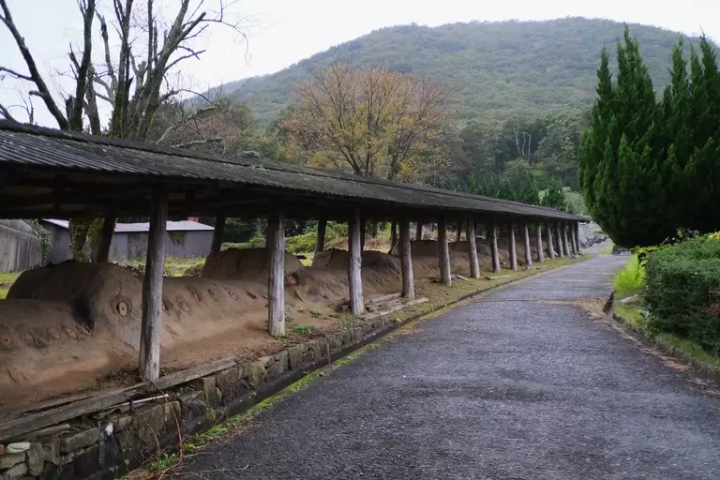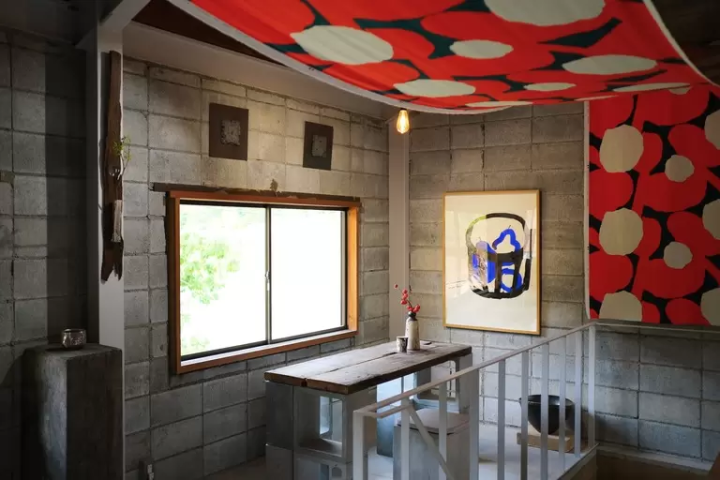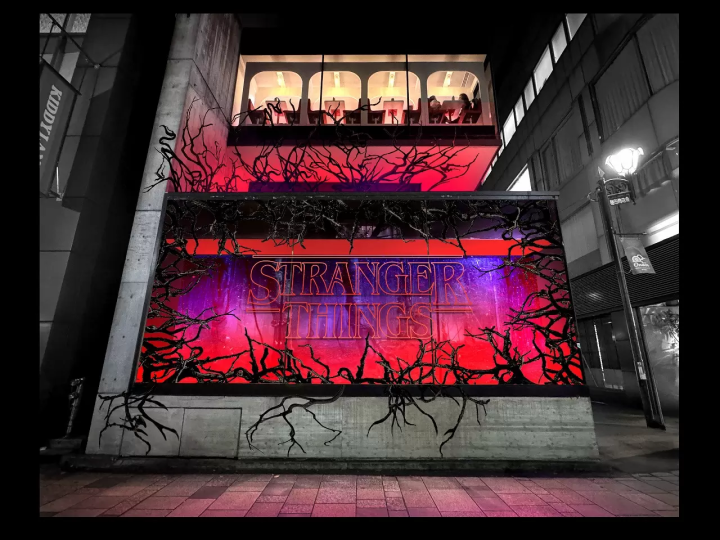Tamba Pottery: Craft, Cuisine, and Cultural Insights on a Trip from Kyoto or Osaka (Part 1)

Nestled in the serene landscapes of Hyogo Prefecture is the traditional craft of Tamba-yaki (also known as Tamba Pottery), one of Japan's oldest pottery styles. This area is my favorite spot in Japan for pottery shopping. With a history spanning over 850 years, Tamba Pottery is celebrated for its natural, earthy tones and simple yet elegant designs that highlight the beauty of the soil. Let’s explore how this ancient craft has become more accessible and how you can experience its beauty firsthan...
Accessing Tamba Sasayama City from Kyoto or Osaka
Reaching Tamba Sasayama City (home to Tamba-yaki “Konda area”) from Kyoto or Osaka is easier than you might think. I used to travel around Japan without an internet connection or knowledge of the language—that was a real adventure! Now, with translation apps and Google Maps providing train and bus schedules, use these as your best friends, and you'll be alright!
From Kyoto:
Take the JR Tokaido Sanyo Main Line New Rapid Service to Amagasaki Station, then transfer to the JR Fukuchiyama Line and alight at Aino Station. The journey takes approximately two hours. For detailed train schedules, refer to the JR West Timetable.
From Osaka:
Board the JR Fukuchiyama Line directly from Osaka Station to Aino Station, with a travel time of about 1 hour and 15 minutes. Detailed schedules are available on the JR West Timetable.
Upon arrival at Aino Station, local buses and taxis will transport you to various pottery studios and attractions in the Tamba Sasayama region. For bus schedules and routes, consult the Shinki Bus website.
The Origins of Tamba Pottery
Tamba Pottery, one of Japan's oldest ceramic traditions, is known for its rustic, unglazed appearance and natural, earthy tones. Its origins date back even further than initially believed—while traditionally thought to have begun during the Kamakura period (1185-1333), recent findings suggest it originated in the late Heian period (794-1185). This discovery places Tamba Pottery among the six oldest kilns in Japan, a prestigious group known as the 'Rokkoyo'. These six ancient kilns form the foundation of Japanese pottery culture, each with its distinctive style and contribution to the nation's ceramic history.


Tamba Pottery is characterized by its functionality and everyday use, embodying the aesthetics of wabi-sabi, which embraces simplicity and imperfection. Wabi-sabi is a concept that appreciates the humble beauty that eliminates the unnecessary and the unique patina garnered from the passage of time. Each piece of Tamba Pottery reflects its handmade nature, and the natural colors—achieved without glaze—bring joy through the richness of texture and the changes in appearance that occur with use. In this way, Tamba ware offers a rich experience in daily life and showcases the harmony between natural materials and human craftsmanship. The pottery comes in various forms, including storage jars, tea utensils, and large vessels, making it highly versatile and practical.
Visiting a pottery studio: The Soul of Tamba Pottery
No trip to this area is complete without a visit to a pottery studio to witness where the magic of Tamba pottery unfolds! I visited Shoyo Gama, a historic pottery studio that has upheld this proud pottery tradition for three generations. In 2022, they breathed new life into an unused workshop, creating a new space emphasizing "openness" and connecting Tamba-yaki with the local community and visitors. Whether you're looking to shop for beautiful pottery or participate in a workshop, this studio welcomes everyone—no reservation needed!
(If you wish to participate in the workshop, it is necessary to contact Shoyo Gama in advance.)

Utilizing iron-rich clay from the region and a unique climbing kiln built along the slopes of the mountains, Shoyo Gama embodies strength, rustic beauty, and a deep connection to the land. (Currently, pottery is mainly being produced using gas kilns and electric kilns.) With each piece, they aim to produce pottery that brings warmth and authenticity to people's everyday lives.



I had the chance to work with Oogami Yuki, the third-generation potter of Shoyo Gama. He is one of the friendliest artisans I've met, and he is incredibly patient and eager to share his craft.

Together, we fired a sake cup, and let me tell you—it is no easy task! While it's not the same as creating a piece entirely from scratch, this experience allows you to learn more about Tamba pottery and take home a unique souvenir. If you're staying in Japan for a short period, this is a fantastic experience at an affordable price (11,000 yen).
To make a reservation for this experience, you need to contact them by email at least one week in advance of your desired date.
Email address:shoyogama@gmail.com


To sign the box for the sake cup you made, a casual calligraphy lecture will be held, where you can learn how to write. Just remember that the gallery is closed on Tuesdays. The closest station to the gallery is Aino Station—from there, you can take a taxi (10-15 minutes, approximately 3,000 yen) or a local bus.

The studio is also well-prepared for foreign visitors, with friendly staff—including Temima, who used to teach pottery classes in Israel—who can guide you in English. And if you decide to make something, the kiln will even ship your creation internationally, allowing you to take home a piece of Japan’s pottery heritage and your memories.
Other things to do nearby
From Shoyo Gama kiln, you can take a pleasant walk to The Museum of Ceramic Art,Hyogo which is about 20 minutes away on foot. The route leads you along peaceful country roads lined with rustic houses, lush fields, and pottery workshops, offering a glimpse into the essence of Tamba Sasayama's pottery culture. It’s sure to be a highlight of your trip!

Enjoying Local Cuisine with Tamba Pottery
After witnessing the artistry behind Tamba Pottery, I recommend taking the experience a step further by dining from it. One of the most atmospheric spots in the area to do just that is SAKURAI restaurant.

Owned by Chef Tatsuya Sakurai, SAKURAI specializes in authentic French galettes—a traditional dish from the Brittany region of northwest France. In 2021, Chef Sakurai transformed an old ryokan in this pottery village into a charming galette specialty restaurant. His love for galettes began during a trip to France, where he was captivated by their flavor, texture, and the comforting way they reminded him of Japanese okonomiyaki. Inspired by this experience, he brought galettes to Japan, confident that their simplicity and deliciousness would resonate with Japanese diners.

Why enjoy French cuisine while in Japan? Because each dish is crafted with locally sourced ingredients, resulting in genuinely indescribable flavors. Moreover, every plate used for the lunch course we experienced is made by artisans of Tamba Pottery, creating a unique blend of Japanese tradition and Western flavors. For me, eating at SAKURAI was more than just enjoying a meal—it's an opportunity to appreciate craftsmanship, connect with local culture, and understand the profound connection between the earth and what's on your plate.



Here's an interesting fact: in September 2023, Chef Sakurai participated in the 28th National Galette Competition (Concours National de la Meilleure Galette 2023) in Brittany, France. Competing among highly skilled French chefs, he achieved an extraordinary milestone—becoming the first Japanese chef to win second place in his division and third place overall. His accomplishment is like a foreign chef winning an okonomiyaki competition in Osaka—a testament to his talent and dedication!
Conclusion
I hope you enjoyed this journey to this beautiful part of Hyogo—one of my favorites! I stayed overnight to explore more of what this region offers. In part 2 of the article, I’ll be tasting more local dishes and even trying my hand at harvesting the famous kuro mame (black soybeans). I hope you’ll read it too!
Welcome to Hyogo Hyogo is a gateway to the Kansai region, which nurtures the blessed land that connects the Sea of Japan, the Chugoku Mountains, and the Seto Inland Sea, as well as the blessed climate. There are many spectacular views that will catch your eye, such as Himeji Castle, a World Heritage Site that was selected as one of the 100 Best Cherry Blossom Spots, and the panoramic night view from Mt. Rokko. The world-famous Kobe brand, KOBE BEEF, which is synonymous with Tajima beef, is one of Japan's leading beefs, and the sake rice ``Hyogo Yamada Nishiki'' is a gem that will surprise your tongue. Arima Onsen is a famous hot spring, and Kinosaki Onsen has appeared in many literary works. Surrounded by nature, you can relax your mind and body. You can come across memorable sounds such as the thunderous sounds of the whirlpools of Naruto on Awaji Island, and the dynamic sounds of the fireworks festivals held in various places in the summer. In the herb gardens and botanical gardens in the prefecture, you will be healed by the gentle and pleasant scent of herbs and flowers throughout the four seasons. Enjoy a new journey in Hyogo that stimulates the five senses of sight, taste, touch, hearing, and smell.
The contents on this page may partially contain automatic translation.






























![[Wakayama Guide] Ume and Umeshu (Plum and Plum Wine)](https://resources.matcha-jp.com/resize/720x2000/2025/12/08-252248.webp)
![[2025 Update] From Kansai Airport to Namba - Recommended for travelers with large luggage! Travel comfortably by bus](https://resources.matcha-jp.com/resize/720x2000/2025/10/25-248088.webp)
![[ Naruto City, Tokushima Prefecture ] Experience the world's largest whirlpools up close on a sightseeing boat at the Spring Whirlpool Festival!](https://resources.matcha-jp.com/resize/720x2000/2025/02/05-222727.webp)

![Deep dive into Japanese brands! A tour of famous leather shoe stores with GENSEI & Nin [Madras Edition]](https://resources.matcha-jp.com/resize/720x2000/2025/12/17-253129.webp)